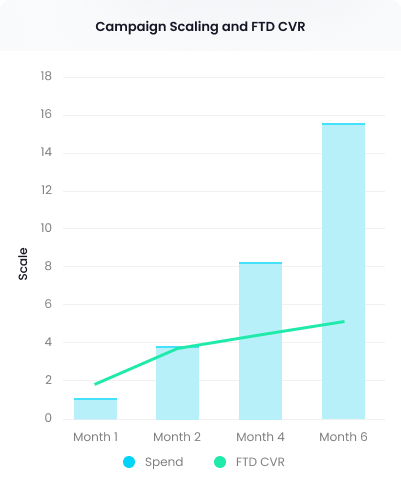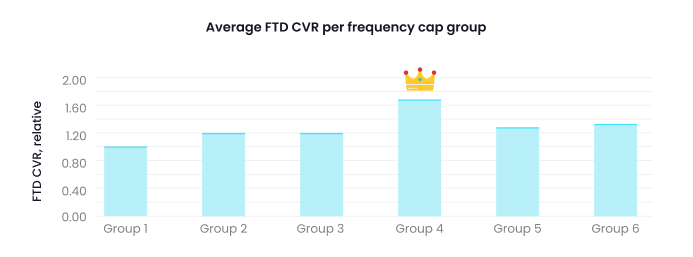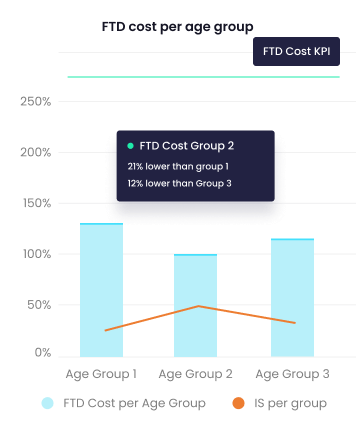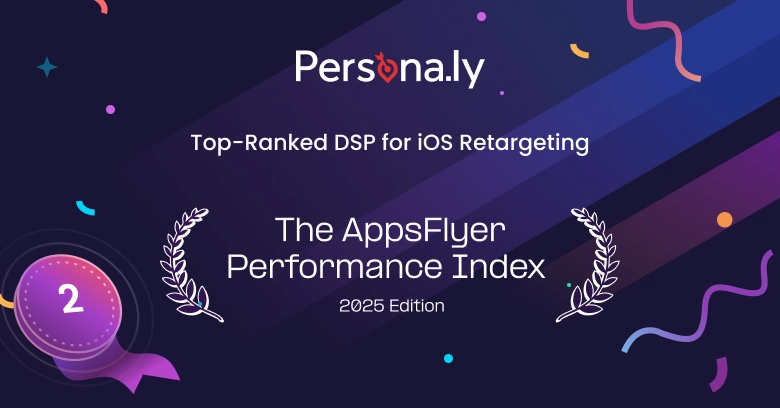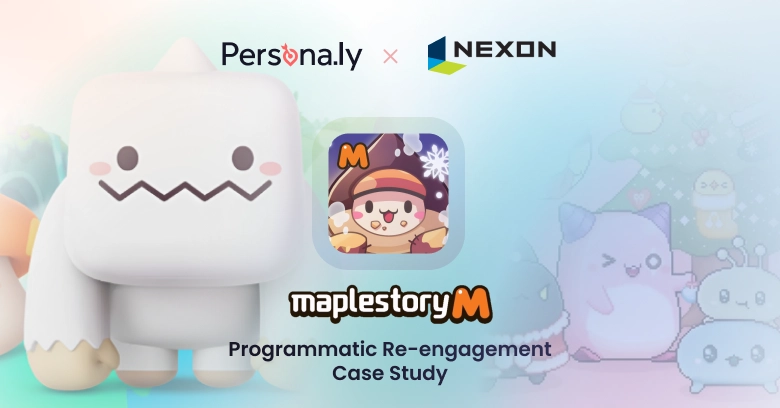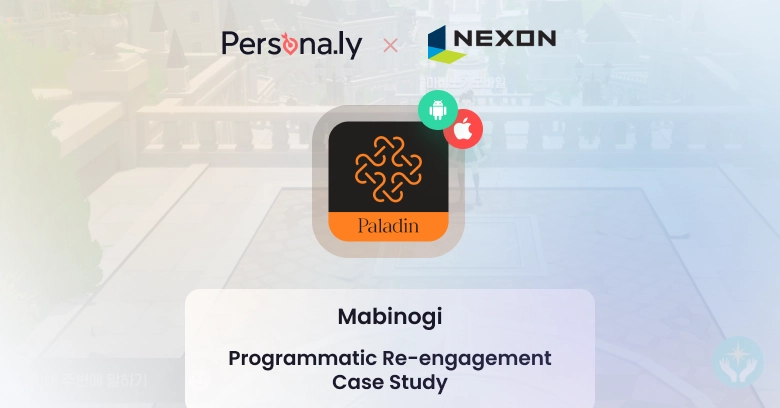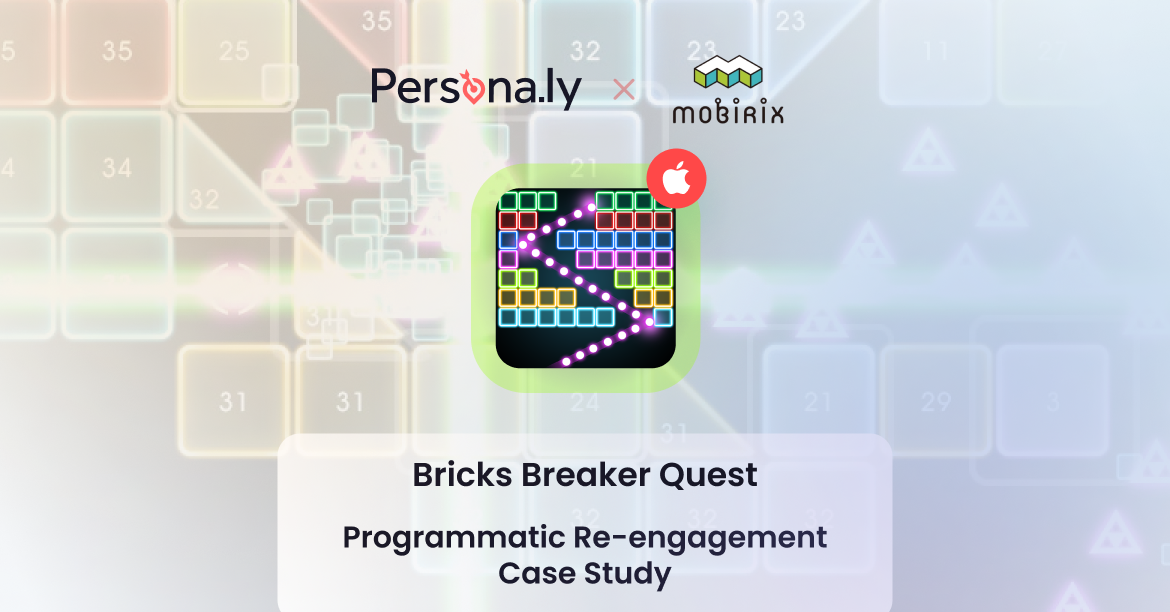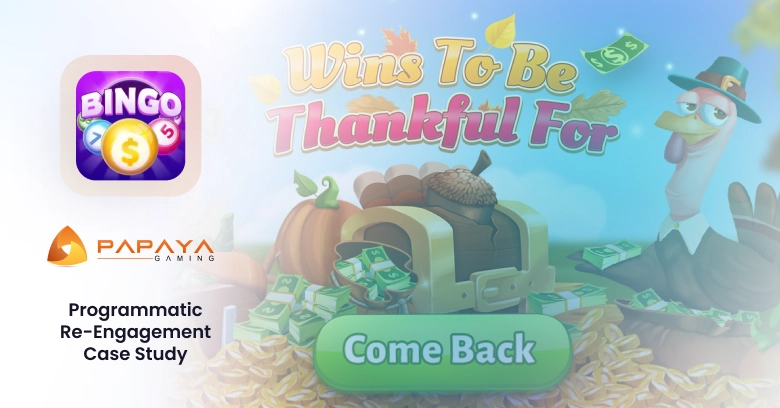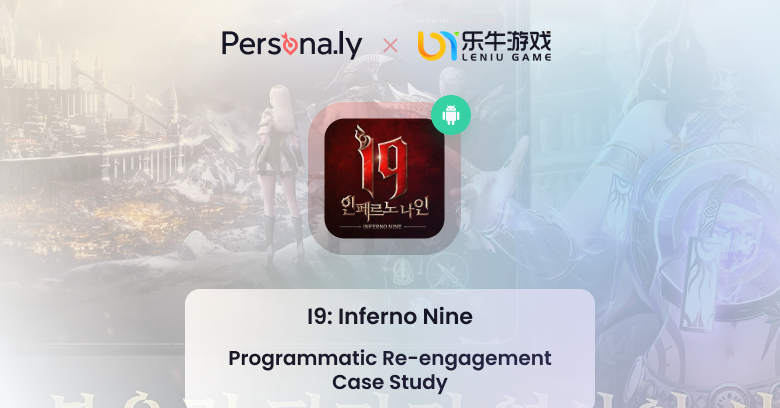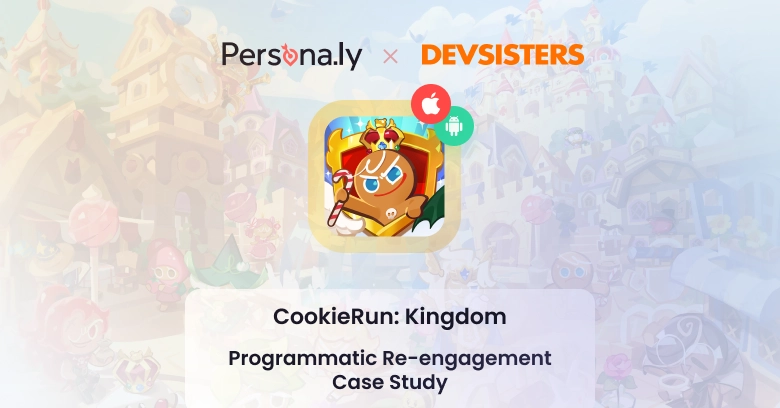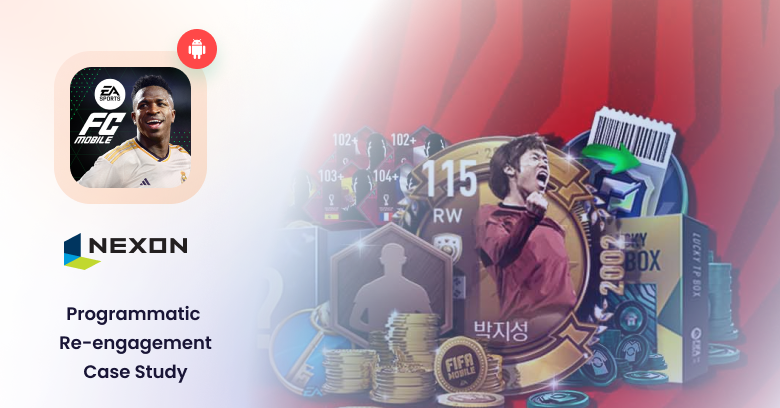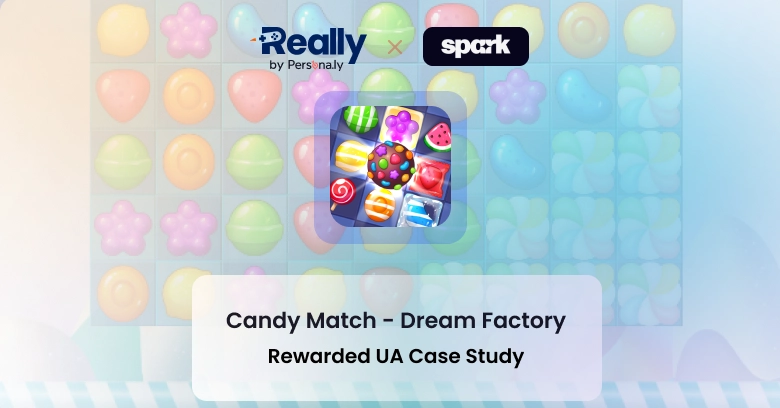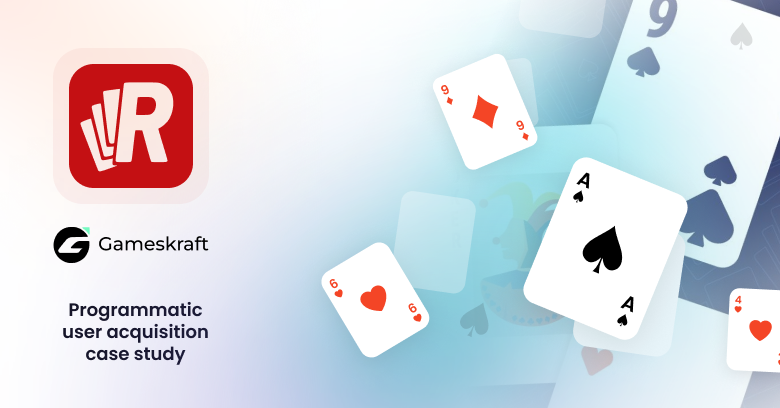
RummyCulture Exceeds FTD Cost KPI by 2x with Persona.ly’s Age Prediction Capabilities
Download the PDF version of the case study
Persona.ly worked with Gameskraft to run user acquisition campaigns for its top skill-based gaming app: RummyCulture on Android in India. The initial campaign goal was to bring users who would register to use the app.
Two months after the campaign started, the focus was shifted toward a deeper funnel KPI: FTD (first-time deposit).
Results at a glance:
55%
FTD cost below the KPI
15.5x
campaign scaling within 6 months
2x
FTD CVR increase within 2 months
The Process
When we started running the UA campaigns for Gameskraft, our initial approach was to target a lookalike audience based on the first-party data provided by the client. The initial goal was to acquire users who would register in the app after downloading it. We were able to achieve this goal in the first week of running the campaign and continued to beat the KPI, delivering registrations at a cost significantly lower than the KPI.
Our in-house DSP is integrated with all the major SSP platforms and is constantly processing over 2.5M queries per second of in-app inventory. The proprietary machine learning algorithm analyzes over 60 data points in real time and identifies the most prominent user segments to run effective UA and retargeting campaigns.
Within a very short period of time, our programmatic DSP was able to develop a basic classification model to distinguish between the audience segments who would click the ad, install the app, and complete the registration, and those who wouldn’t install it.
By month 3, the KPI was shifted toward users who would make an FTD (first-time deposit). By then, enough data was collected for our model to adjust to the deeper funnel KPI.
Based on the learnings from the previous phases, a custom ML model was built focusing on audience segments with a higher probability of converting (making an FTD). This approach allowed us to keep outperforming the newly provided KPI while safely scaling the campaign.
Campaign results
Campaign Scaling and FTD CVR
With the initial campaign setup based on a lookalike audience, we were able to outperform the registration (and FTD cost) KPI. We quickly scaled the campaign 4 times thanks to basic targeting definitions based on the segments who clicked, installed the app, and finished the registration process.
The data collected allowed us to build a custom factoring model to classify users into two groups:
- Users who were likely to register in the app and make their FTD,
- Users who would not complete the funnel.
Following the user classification, the Install-FTD CVR (conversion rate) began to rapidly increase. The Install-FTD CVR doubled by month 2 of the campaign and has reached 2.4x by month 6.
Over the first 5 months, we managed to stay well below the FTD KPI while gradually scaling the campaign. Despite the fact that a stricter KPI was introduced on month 5 (the FTD KPI cost was reduced by 22%), we were able to outperform it by a significant margin. This allowed for a massive campaign scaling 15.5x vs. the initial budget by month 6.
Total Frequency Cap
Limiting the total FC (frequency cap) is a common practice for performance campaigns. The cap setup is critical, as it prevents overspending the budget on users who are not interested in the promoted app.
Our algorithm constantly tests various campaign setups and combinations of factors to maximize performance. During the learning phase, our model learned that even the users who have been exposed to ads multiple times still have a high chance of converting and becoming paying customers. After receiving the signals that there is a great probability of conversion despite being exposed to the ads multiple times, our bidder divided the audience into several buckets based on the number of impressions. Following the division, the audience segments who were exposed to ads multiple times were factored lower, however, saw the ads if the impression was won at a lower cost.
This approach allowed us to use the budget to its fullest potential by lowering the FTD cost and ensuring the maximum number of FTDs.
Age Group Optimization
Another level of bid optimization was achieved thanks to our platform’s age prediction capabilities. Our algorithm was able to identify that users of a certain predicted age group have a higher likelihood of converting compared to other groups. While, due to the precise targeting, all three age groups are well below the FTD Cost KPI, group 2 has shown far more prominent results and brought FTD cost 21% lower than group 1 and 12% lower than group 3.
Age prediction capabilities allowed us to allocate the campaign budget toward the best-performing age group to bring more converting users.
“Persona.ly has introduced a fresh and innovative approach to handling programmatic mobile campaigns. As a result, we have been able to diversify our marketing mix with confidence. Working with Persona.ly has yielded remarkable outcomes from the outset, and we were able to develop a sense of trust with them right away.”
Yogesh Kumar, Senior Marketing Manager at Gameskraft
About Gameskraft
Since its inception in 2017, Gameskraft has catered to a growing group of skill-based players within the Esports community. It is now one of the country’s most recognized skill-based Esports companies, home to two massively popular platforms: Gamezy and the ISO 9001:2015-certified RummyCulture. Gameskraft operates at the convergence of technology and Esports, offering millions of gamers secure and high-quality experiences. The company’s keen knowledge of the sector drives newer, innovative, and safer ideas.
“It’s an absolute pleasure and honor working with a skill-based industry leader such as Gameskraft. Their devoted UA team has done its absolute best to help us achieve success. The mutual understanding from day 1 of our collaboration enabled us to adjust our game plan and attain outstanding outcomes. ”
Nadav Nadler, Customer Success Manager at Persona.ly
About Persona.ly
Persona.ly is a mobile-first DSP operating worldwide. Using our proprietary bidder and machine-learning algorithms, we offer transparent, performance-driven, highly targeted UA and retargeting solutions at scale with access to over 2.5 million ad auctions per second. We are trusted by Nexon, Papaya Gaming, Rapido, Games24x7, Ubisoft, Tilting Point, and many others.
Persona.ly strives to be more than just a vendor for its partners, but a partner that helps generate actual value, growth, and broad marketing insights that can be used across channels.

